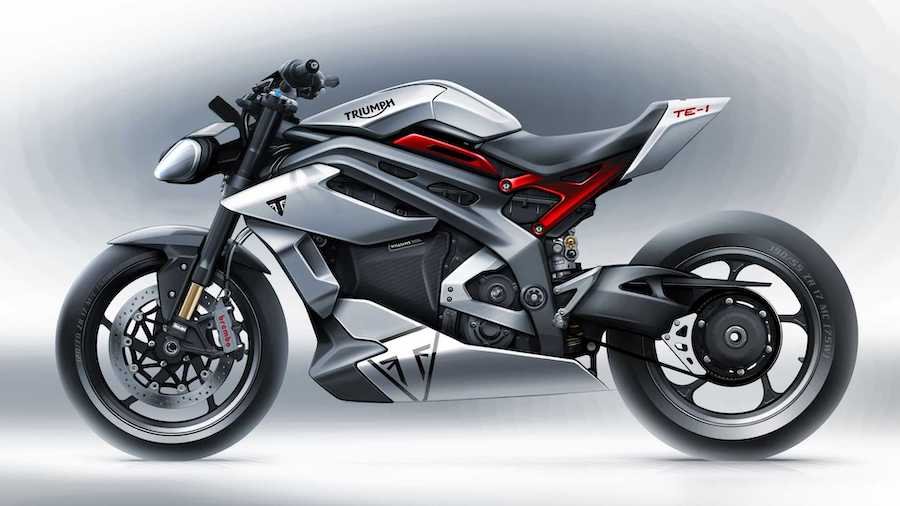Triumph Reveals TE-1 Electric Powertrain Prototype And Bike Design

Back in May, 2019, Triumph first announced to the world that it was working on the mysterious TE-1 electric motorcycle project. It’s an exciting road to embark upon, and in the past two years, anyone who’s interested in cars as well as motorcycles has likely watched the U.K. electric vehicle industry with a keen and interested eye.
You see, the folks at Hinckley weren’t interested in starting this journey alone. Instead, they planned to rely on other British companies and their comparative component competencies from the outset. Williams Advanced Engineering—which is, yes, related to the late, great Formula One dynasty—would handle the battery and controller. Integral Powertrain would handle the motor.
Last, but certainly not least, the University of Warwick would handle benchmarking the prototype and developing plans for how to proceed before that prototype could even be tested.
It’s now March, 2021, and Triumph is back with a TE-1 update. The concept sketches, it must be said, are far more Electric Speed Triple than Electric Bonneville, and we’re pretty pleased about it. That single-sided swingarm, in particular, is quite lovely to behold.
There’s more to TE-1 than this, though. According to Triumph, the battery-case-as-stressed-member design is more about a broader electric platform than simply limited to this first electric bike design. TE-1 is about carving out a new way of thinking about motorcycles. It’s Triumph envisioning itself as something other than just a producer of combustion-engined bikes, long-term.
While Triumph did invite Williams Advanced Engineering, Integral Powertrain, and the University of Warwick to each contribute updates regarding their parts of this project, I should caution that the team still reckons it’s only about halfway to completion. In other words, there are several kilometers to go before we cross the finish line and start talking about the really practical stuff like battery capacities, ranges, charging times, weight, and all the other specs. We’re also miles away from production timelines, distribution, and even basic pricing questions at this point.
Now, the updates. Integral Powertrain is so far claiming an equivalent 180 horsepower out of an electric motor that weighs just 10 kilograms (or 22 pounds). That will be both significant and impressive if it’s close to the real-world production numbers. They’ve done this, in part, by combining the inverter and motor into a single compact package, focusing on mass centralization and overall simplification of the entire operational framework. The fully functional prototype motor, IP says, is “achieving a power density twice that of the target set by the UK Automotive Council for 2025.” That’s an emphatic “cheers!” to overachievers everywhere.
Meanwhile, Williams Advanced Engineering is promising impressive, as-yet unparalleled energy density and mass reduction out of its battery. However, it’s playing all its numbers extremely close to its chest, so that talk isn’t terribly meaningful just yet. Triumph also unveiled a prototype chassis, which includes a main frame and rear frame, with both the battery and the motor fitted in place. Since it’s only halfway to project completion, there’s still a long way to go. However, it’s nice to see the progress Triumph has made, as well as to get a few more concrete details that show Hinckley edging one step closer to its electric future.
Incidentally, Triumph says that if all goes according to plan, we should see a design prototype toward the end of 2021. Our fingers are crossed for an exceptionally nice holiday season this year.
Related News
